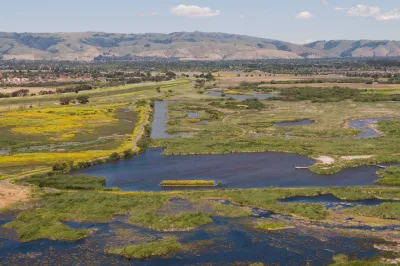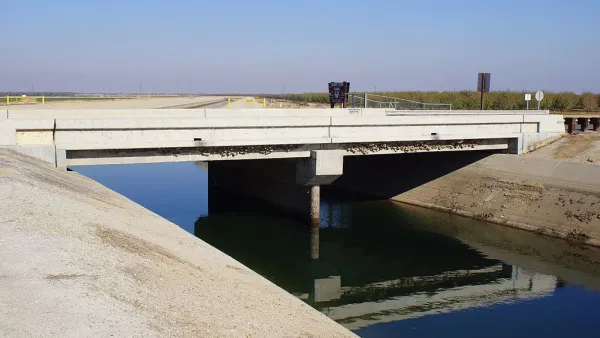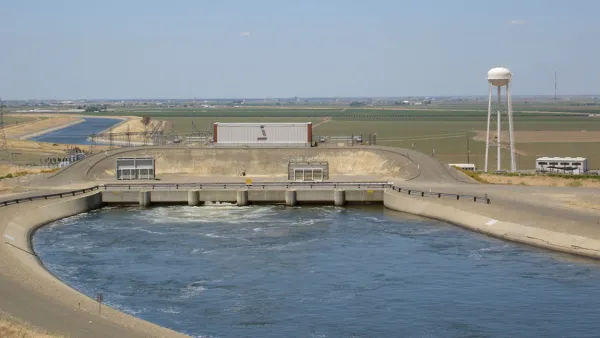From clean drinking supply to sinking infrastructure, California has a lot to worry about when it comes to water. Two upcoming bonds could make a dent in the work ahead.

California voters will soon decide whether to fund two water bonds for a total of $13 billion. The Planning Report examines the complementary proposals—one in June and one in November—in an interview with Jerry Meral, a veteran of natural resource management and a proponent of the November bond.
Up first on the June ballot, Proposition 68 would spread $4 billion among parks, trails, and land conservation, as well as water recycling. More money specifically for water infrastructure would come from the $8.9 billion Water Supply and Water Quality bond scheduled for the November ballot. That measure is expansive, covering 100 different types of water projects, Meral says.. Some of its major funding categories include:
- Safe drinking water and wastewater disposal ("a big priority in disadvantaged communities," Meral notes.)
- Wastewater recycling, water conservation, and watershed restoration.
- Implementation of California's Sustainable Groundwater Management Act—a landmark bill meant to help the state replenish the copious amounts of water it draws from underground every year.
- Repair of the Oroville Dam, whose failure in 2017 forced the evacuation of 188,000 people, and of the sinking Friant-Kern Canal, which supplies key farmland areas.
- Restoring the polluted, shrinking Salton Sea. "I daresay the Salton Sea is the single greatest threat to air quality in the United States," Meral says, as the exposed seabed could "blow dust of biblical proportions" all over the state. The two bonds together cover the funding needed for the state's restoration plan.
Meral also talks about California's reliance on bond measures to fund major infrastructure investments, and the willingness of voters to pay for them all. It's not an ideal long-term strategy, he stresses, but for the moment, it could bode well for water in the state—especially since the need for funding is "substantially greater" than the upcoming bond measures combined.
FULL STORY: November Water Bond Promises $8.9 Billion Towards Securing California’s Future

National Parks Layoffs Will Cause Communities to Lose Billions
Thousands of essential park workers were laid off this week, just before the busy spring break season.

Retro-silient?: America’s First “Eco-burb,” The Woodlands Turns 50
A master-planned community north of Houston offers lessons on green infrastructure and resilient design, but falls short of its founder’s lofty affordability and walkability goals.

Delivering for America Plan Will Downgrade Mail Service in at Least 49.5 Percent of Zip Codes
Republican and Democrat lawmakers criticize the plan for its disproportionate negative impact on rural communities.

Test News Post 1
This is a summary

Test News Headline 46
Test for the image on the front page.

Balancing Bombs and Butterflies: How the National Guard Protects a Rare Species
The National Guard at Fort Indiantown Gap uses GIS technology and land management strategies to balance military training with conservation efforts, ensuring the survival of the rare eastern regal fritillary butterfly.
Urban Design for Planners 1: Software Tools
This six-course series explores essential urban design concepts using open source software and equips planners with the tools they need to participate fully in the urban design process.
Planning for Universal Design
Learn the tools for implementing Universal Design in planning regulations.
EMC Planning Group, Inc.
Planetizen
Planetizen
Mpact (formerly Rail~Volution)
Great Falls Development Authority, Inc.
HUDs Office of Policy Development and Research
NYU Wagner Graduate School of Public Service




























